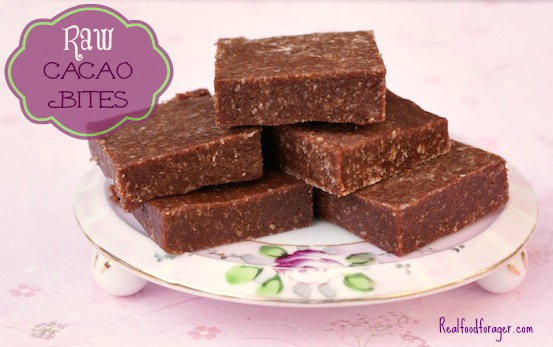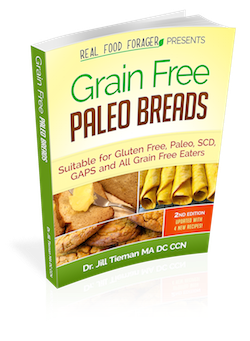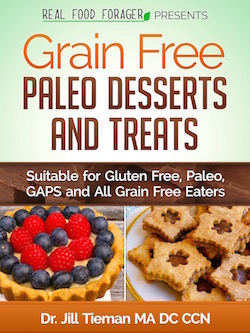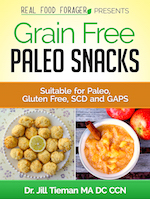I was thinking about a snack bar that is nutritious, yet filling and satisfying. I’ve made snack bars with almond butter and they can get a bit dense. In this recipe I incorporate some shredded coconut to add fat and substance. The best part about these obviously delicious bars is that you don’t have to cook them!
Cacao — What Would We Do Without It?
Cacao (cocoa) trees (Theobroma cacao) grow in the hot climates of Africa and Central America within a 20-mile radius of the equator. Mature plants range from 20 to 25 feet in height and bear flowers that bloom directly on the wide-spreading branches. These flowers produce the fruit which may reach up to 12 inches in length and 4 inches in diameter. The fruit pods contain cocoa beans, which are cultivated, fermented, dried and roasted.
Pure Cacao is Processed at Low Temperatures
Cacao beans are fermented to alleviate bitterness, and processed at low temperatures for maximum nutrient retention. Once extracted from the pods, the beans are rinsed with water. The whole beans are peeled and cold-pressed to form a paste. The fiber is then extracted, in order to separate the solids from the rich oil, or cacao butter.
Cacao Has Nutrition
The main component of cacao is, of course the saturated fat. It contain three fatty acids that are present in approximately equal proportions: stearic, palmitic and oleic acid. These long chain fatty acids have been found to actually lower the LDL levels in the blood. (However, it’s no longer clear that is really important).
Cacao contains polyphenols with antioxidant properties that have many health benefits. A study published in Chemistry Central Journal, in February 2011, showed that cacao and chocolate have higher oxygen radical absorption capacity values (ORAC), total polyphenol content (TP (mg/g)), and total flavanol content (TF (mg/g) than many other antioxidants, foods and powders that are touted as “superfoods.” I wouldn’t necessarily call it a superfood (we know that real superfoods are things like raw milk, fish roe and organ meats), but at least it is an antioxidant — that is important.
Cacao also contains trace amounts of essential minerals like magnesium, calcium, iron, zinc, copper, potassium and manganese and vitamins A, B1, B2, B3, C, E and pantothenic acid.
On grain free Paleo and GAPS diets, snacks can be a challenge, especially for those on the go. You can feel good about eating cacao as there are no sugars and the antioxidant value is high. Enjoy it guilt-free!
These homemade energy bars are so easy to make — no cooking is involved and you can make a batch, wrap them and freeze them.
Organic Almonds
The bars are made with organic almonds that have been soaked and blanched. The Medjool dates that have been pitted and soaked for 10 minutes deepens the rich, nutty texture and flavor.
Almonds, as with any nut, should be soaked and/or sprouted in a salty brine for at least 8 hours and then dehydrated. This neutralizes the naturally occurring enzyme inhibitors in the nut that prevents it from sprouting. However, these enzyme inhibitors make nuts difficult to digest. It is especially important for people with digestive and/or autoimmune conditions to eat food that does not burden the digestive tract, therefore, it is vital that all nuts be soaked and/or sprouted before consumption.
Additionally, almonds should be blanched (skinned) for people on healing diets as well.
Dates are Very Nutritous
Dates are the fruit of the date palm and originated in the desserts of northern Africa and southwest Asia. Medjool dates are larger, dark, moist dates that provide fiber, potassium, and magnesium, nutrients so important for the heart. Other nutrients include, calcium, sulfur, iron, phosphorous, manganese, and copper. These minerals help regulate blood pressure and the proper rhythm of the heart. The fiber helps to neutralize the sugar component of the date.
Medjool dates are legal on GAPS and they have been found to be well tolerated by most people. In contrast date sugar which has been removed from the date and processed is not legal.
Raw Cacao Bites (Paleo/GAPS)
Ingredients
- 2.5 cups raw almonds that have been soaked and blanched (where to get soaked almonds) (how to soak and blanch almonds)
- 10 pitted dates, pureed
- 2 cups shredded coconut (where to buy coconut products)
- 1/2 cup cacao powder (where to buy)
- 2 Tbsp honey (where to buy)
- 1/4 tsp stevia (where to buy)
- 1 tsp vanilla extract
- 1 tsp cinnamon (where to buy salt and spices)
Equipment
- 9 x 13 baking pan (where to buy)
- Pizza cutter
- Spatula
Instructions
- Pit and then soak the dates in filtered water for about 10 minutes before using
- In a food processor, process the almonds until it becomes a smooth nut butter
- Add the dates, honey, vanilla, cinnamon, stevia and cacao powder
- process until it is smooth and well mixed — it will form a ball
- Add the shredded coconut as the last ingredient and mix it in
- Smooth it out in one, 9 x 13 dish — you want it to be about 1/2 inch thick
- Cover with wax paper and refrigerate until hard (1- 2 hours)
- Cut into square portions and wrap individually in wax paper
- pack in snack ziplock bags
Prep Time: 15 minutes
Refrigerator Time: 2 hours
Yield: 20 – 24 squares












